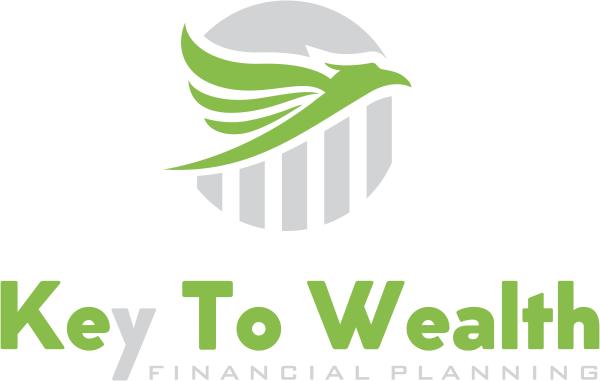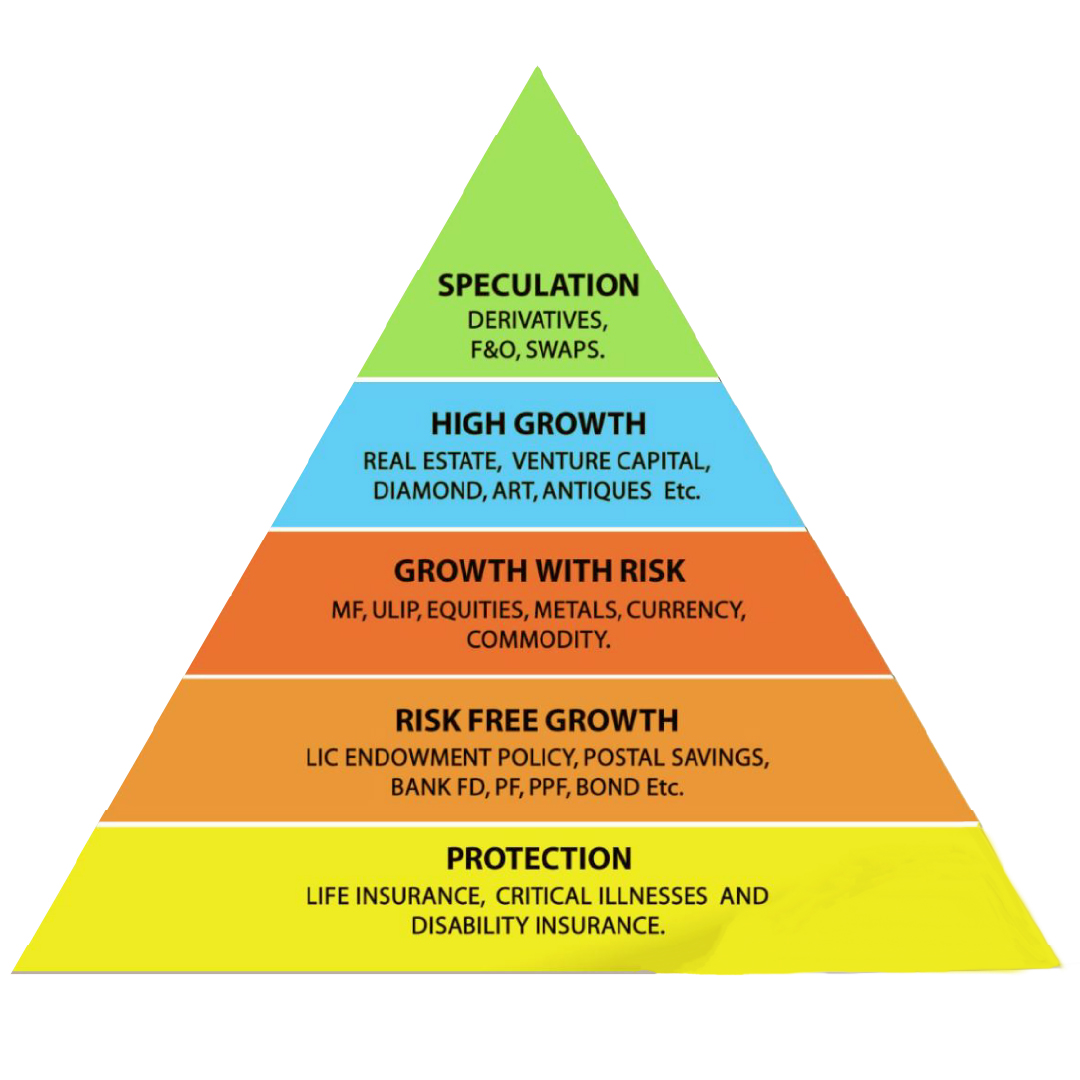There are 5 stages in a Financial Pyramid.
Protection : The bottom two levels of the pyramid provide the holding capacity and therefore increase the risk absorbing strength to the investor so that he can truly benefit from the higher parts of the pyramid. But people who do not provide adequate amounts in the first two stages of the pyramid, so as to earn more ROI on the whole portfolio generally loose heavily
Risk Free Growth :This refers to the financial products that offer protection of income. These products protect our earning capacity. The products that will appear at this stage of the pyramid are: Life Insurance, Critical Illness Insurance and Disability Insurance.
This refers to the safety of the money saved for future. These products serve to provide holding capacity during turbulent times. These products are also meant to be en-cashed at a short notice.
The products that will appear at this stage of the pyramid are: Bank term deposits, Post office Savings schemes, PPF, Government Bills and Bonds and Life insurance Endowment type of policies which offer a savings element along with protection.
Growth with Risk: This refers to financial products that carry an element of risk on the capital invested with a hope of getting more yield on the money invested. These products provide an answer to inflation and by and large expected to yield more returns. But we must understand the capital invested is at the risk of diminishing or even completely consumed in volatile times.
Then why would anyone take such a risk? One need to take that risk, for not taking risk at all can be the biggest risk that one takes in life. These instruments are meant to give adequate amount to meet big expenses and commitments as a reward for the risk taken.
By and large a long-term holding of these assets reduce the risk involved as they perform in some cycles and during an upward cycle they give good returns. The products that will appear at this stage of the pyramid are: MFs, ULIPs, Equities, Metals, Currencies and Commodities.
High Growth : This refers to financial products which require huge amounts to be invested. These products also carry the risk on the capital invested with a hope of getting more yield on the money invested, just like the products at the Growth with risk stage.
Since the capital invested is huge, investors get carried away by the big volumes of sale of the assets and generally there is a myth that they yield a very high ROI (30%+).
The products which appear at this stage of the pyramid are: Real Estate, Venture Capital investments, Big Solitaire diamonds, Highly priced art and antique pieces.
Speculation : Speculation in normal terms mean “Thinking”. Financial instruments keep getting different prices at different times. When a person thinks about these movements and takes a position either to buy or to sell at a particular price at a particular time, that decision is called speculation. Mostly these instruments are held for a short term period. However some investors keep trading for a long term by sell/buy/sell and absorb the losses in-between through a few big gains made over a period. Short term or long term these investors take big risk here, they provide at times 5X margin money to trade for X amount.
Products like Derivatives, F&O and Swaps are examples of speculative products. The bottom two levels of the pyramid provide the holding capacity and therefore increase the risk absorbing strength to the investor so that he can truly benefit from the higher parts of the pyramid. But people who do not provide adequate amounts in the first two stages of the pyramid, so as to earn more ROI on the whole portfolio generally loose heavily.



